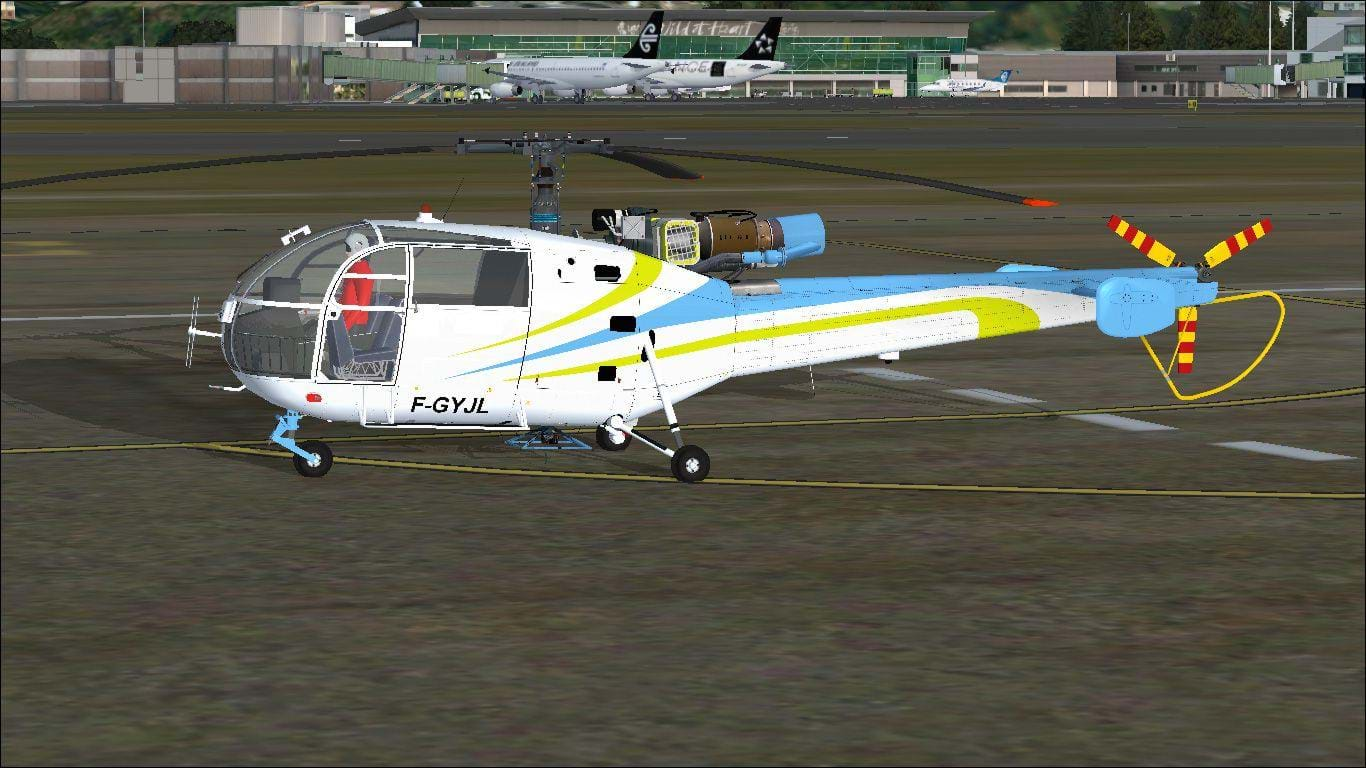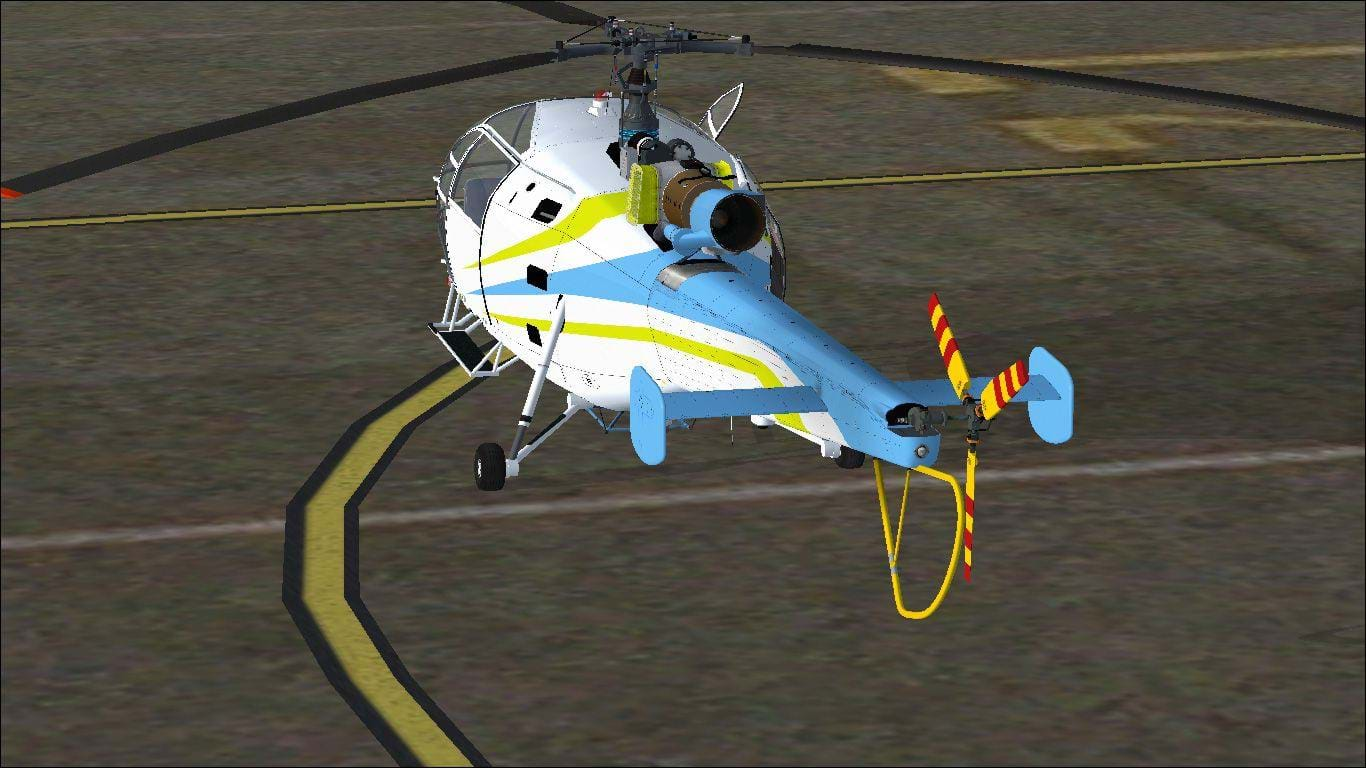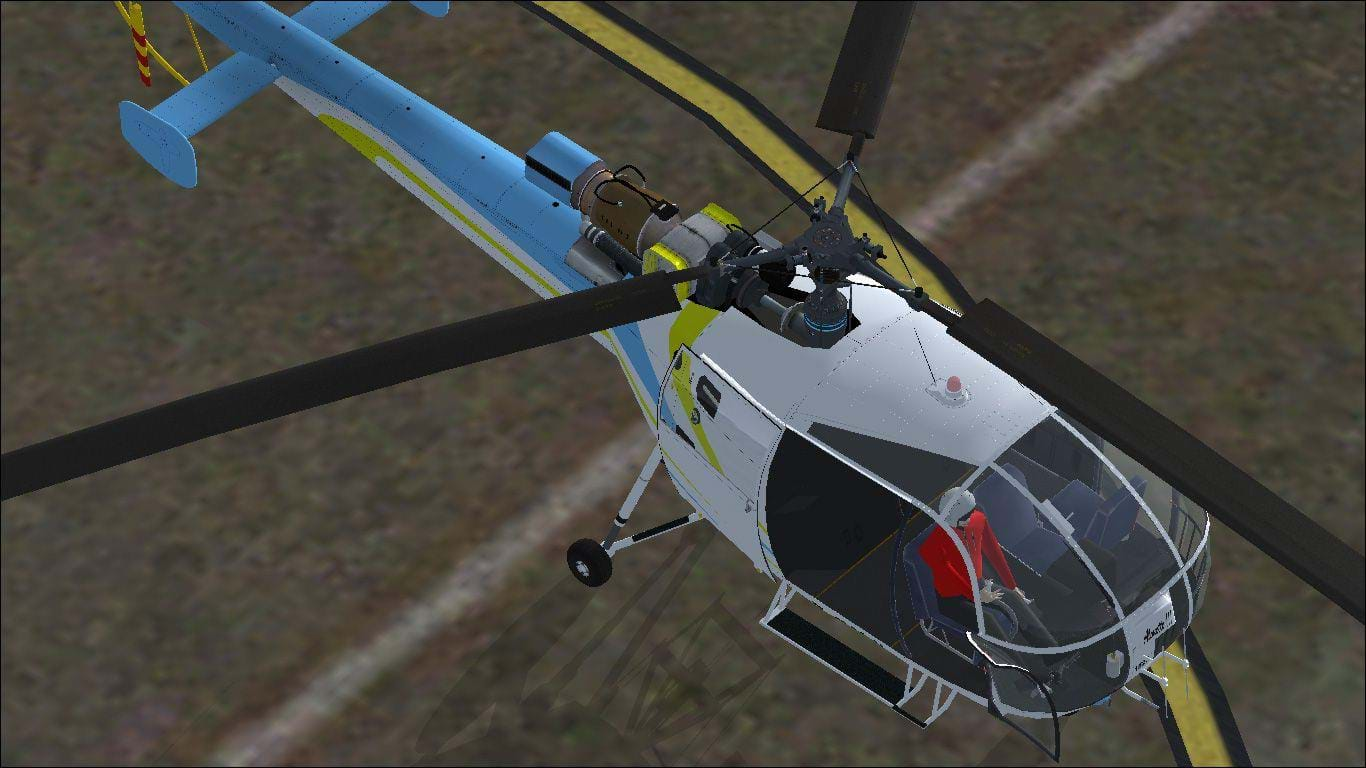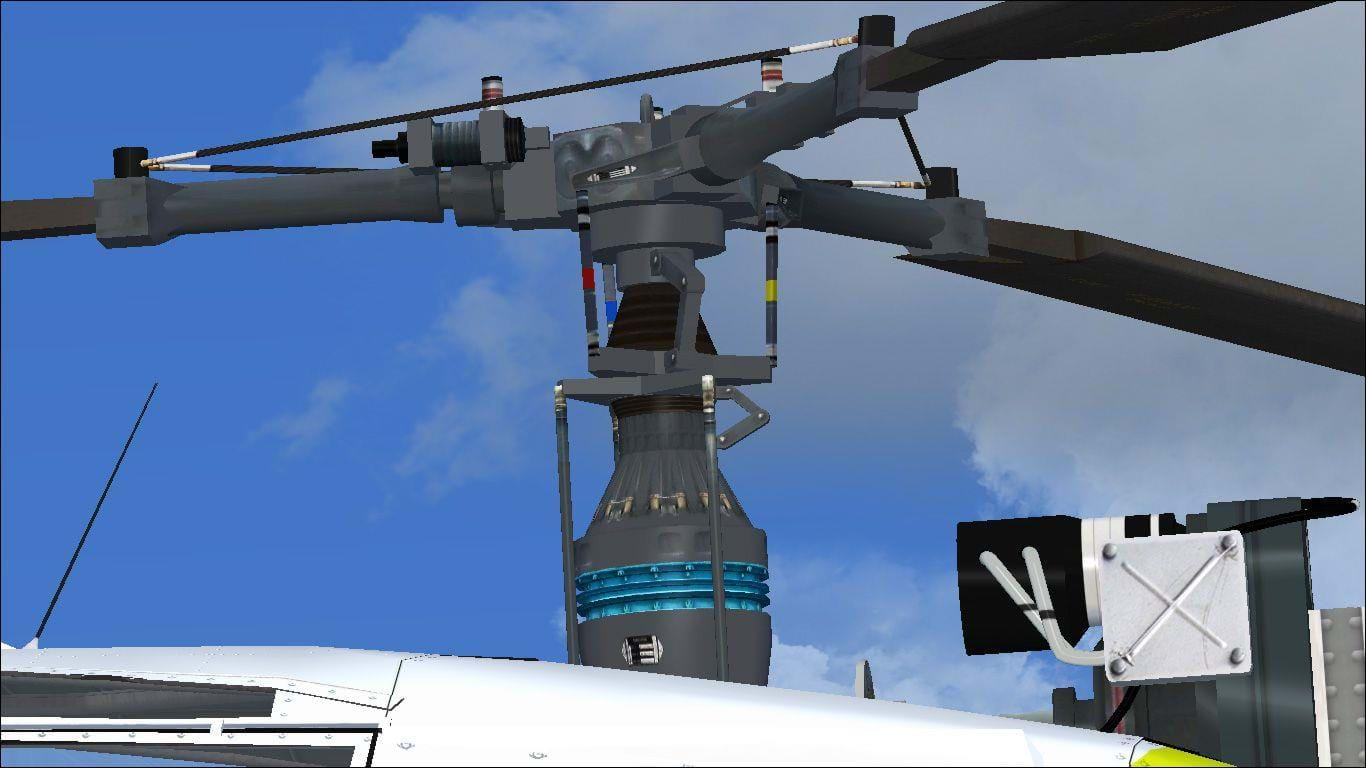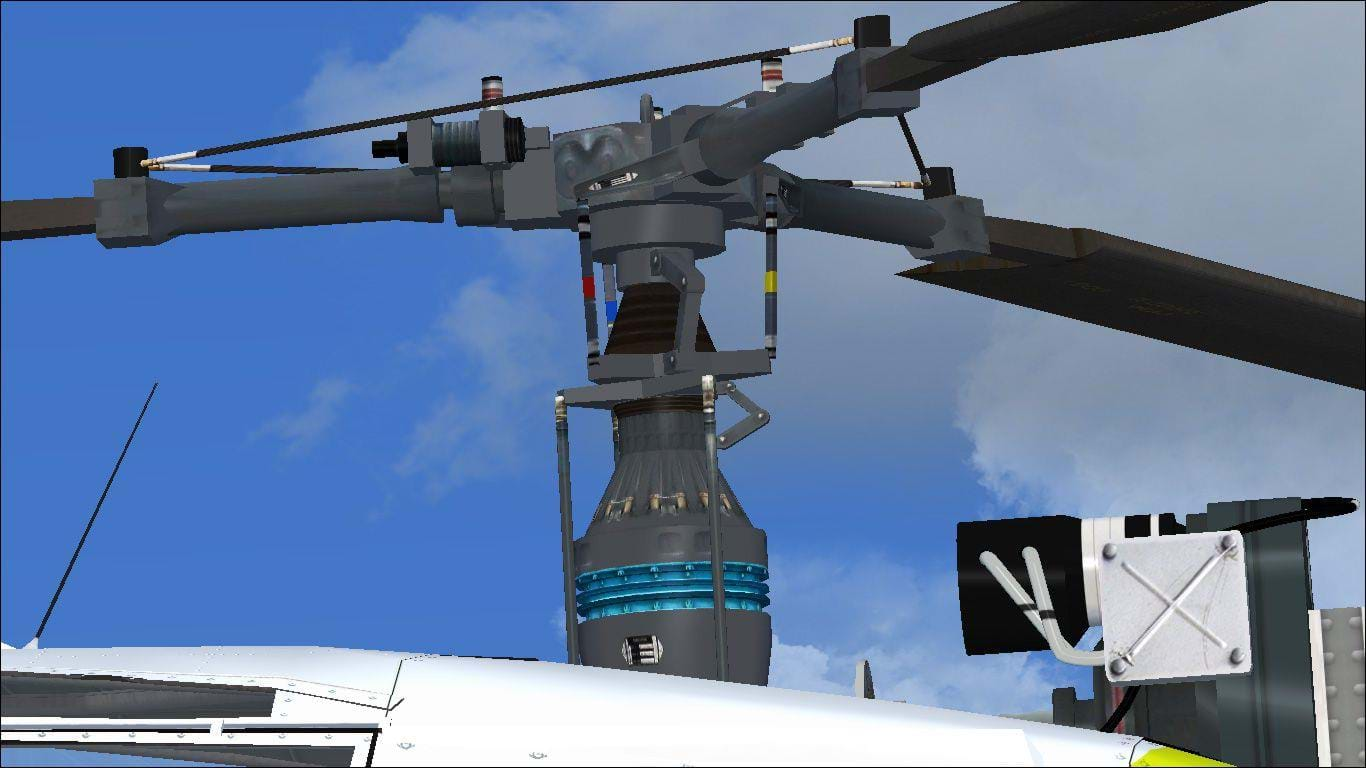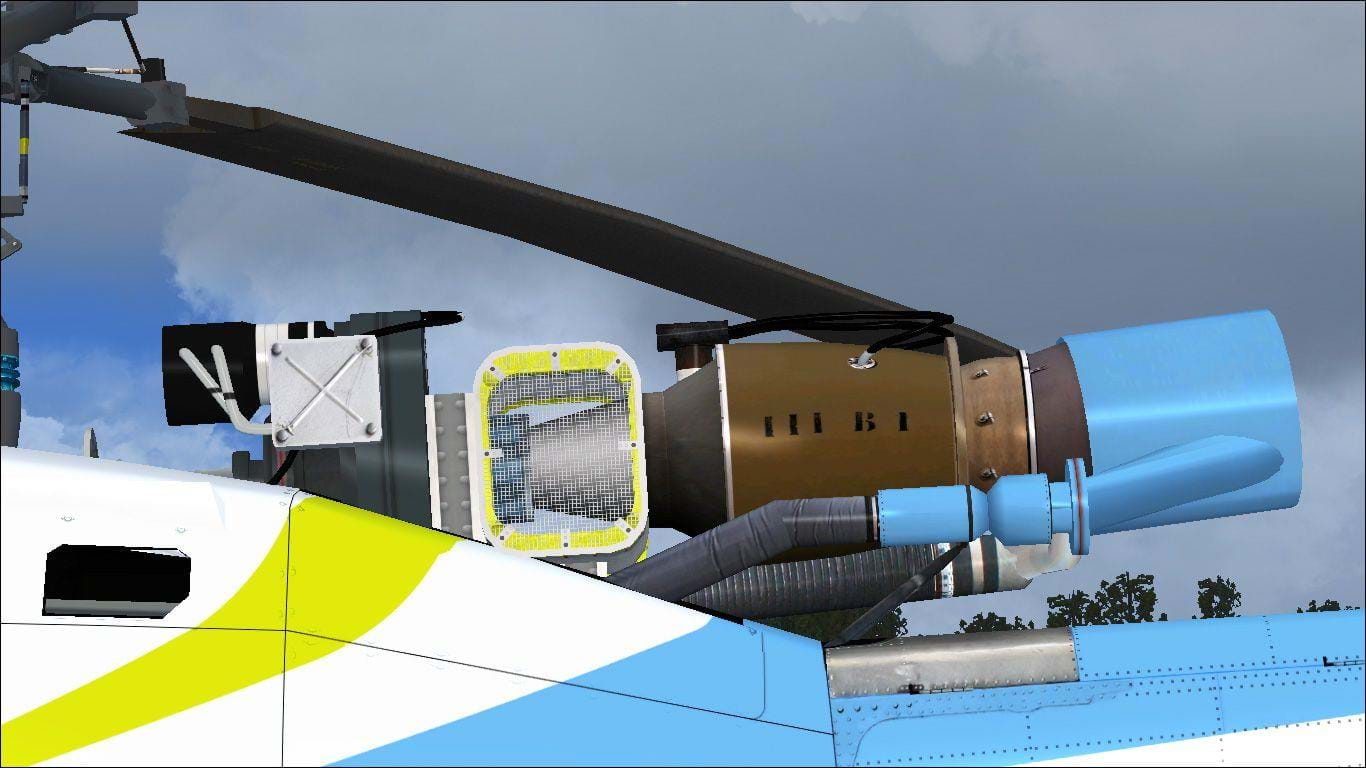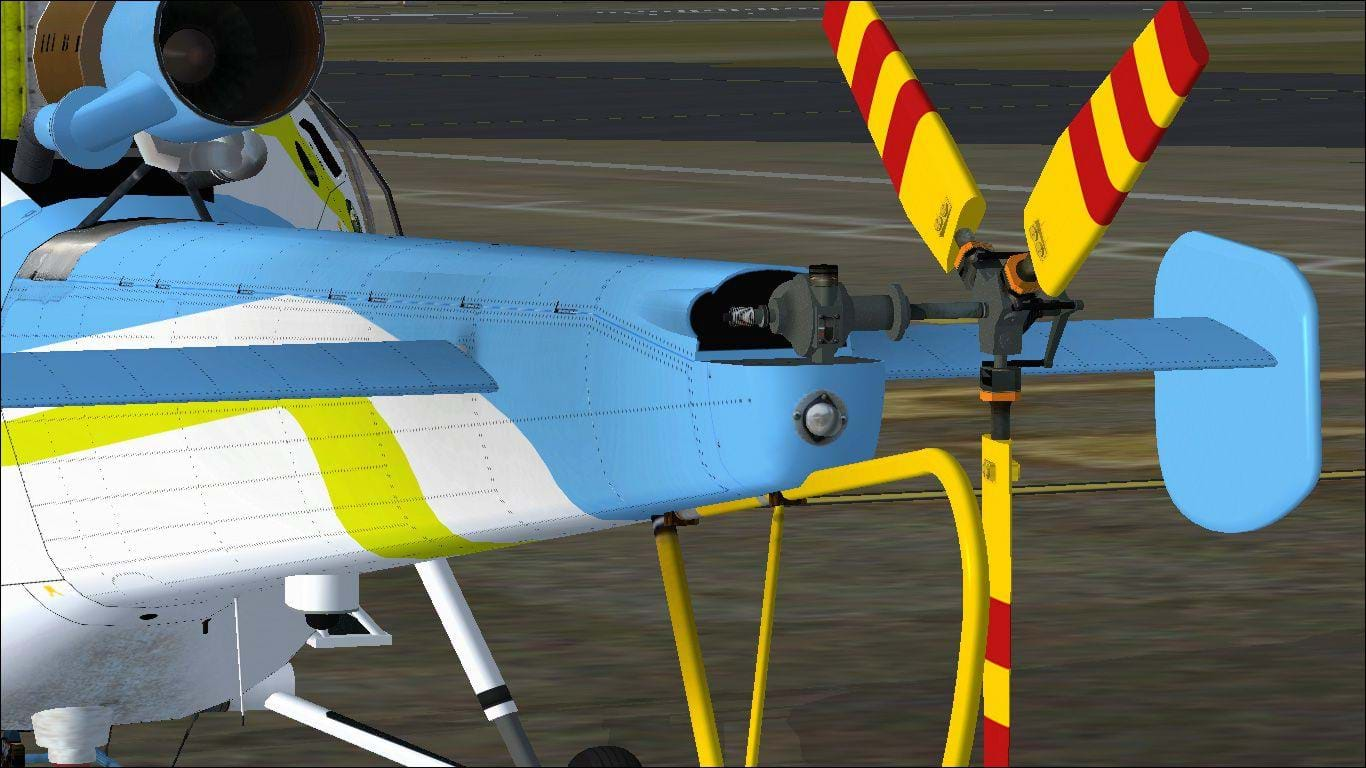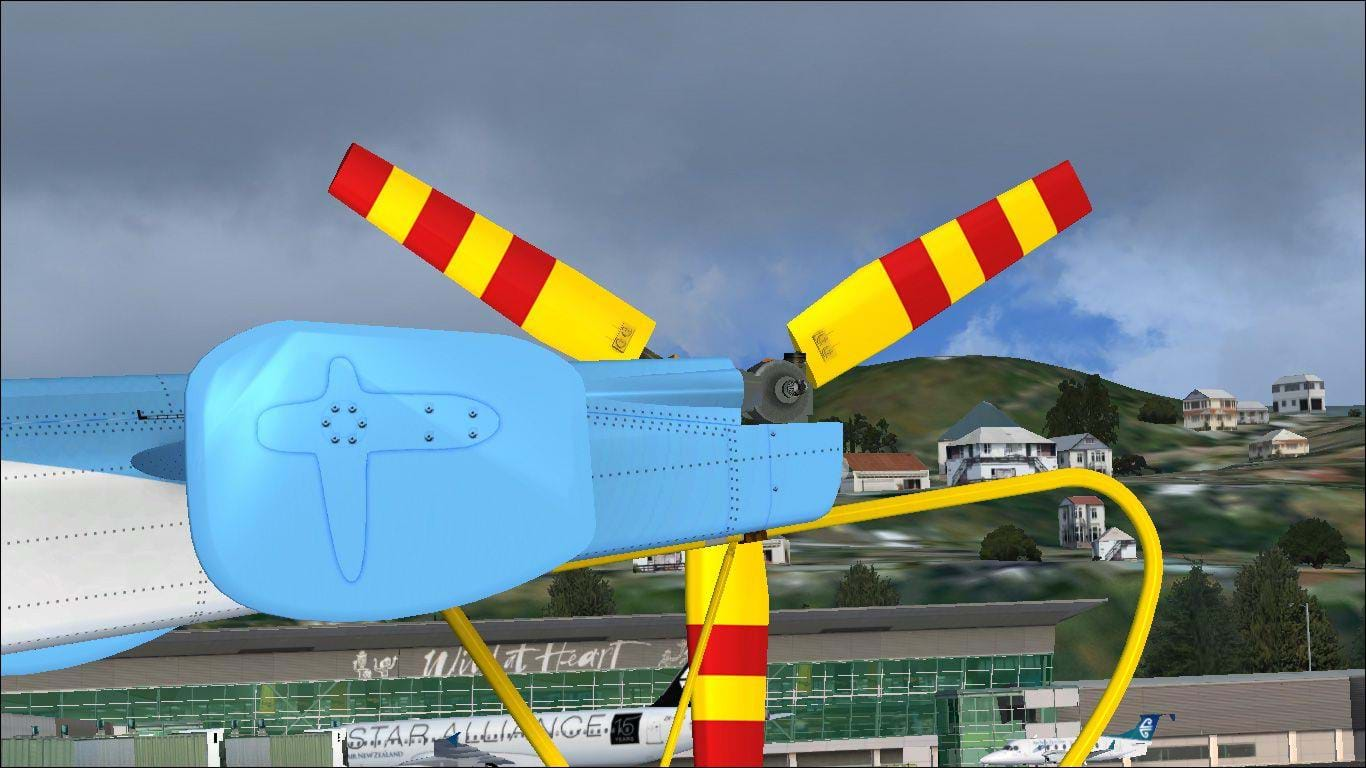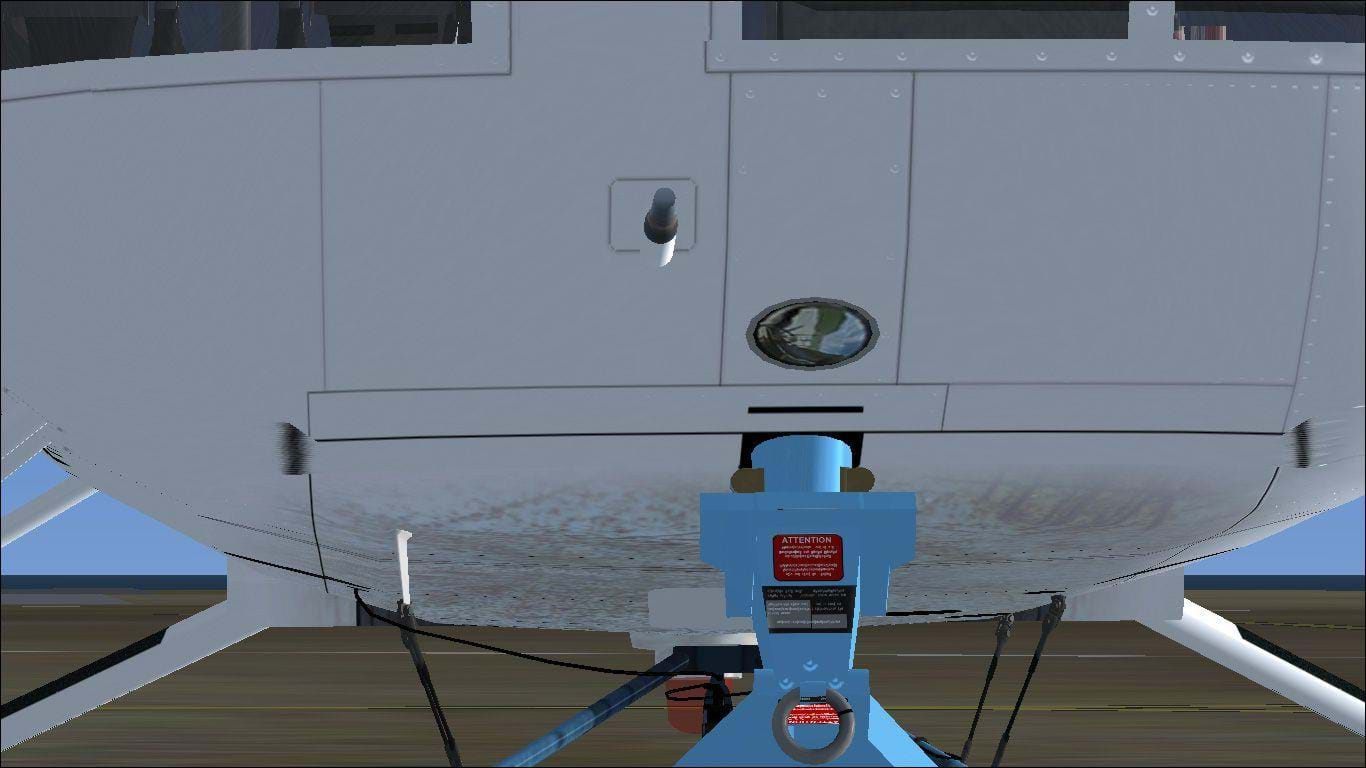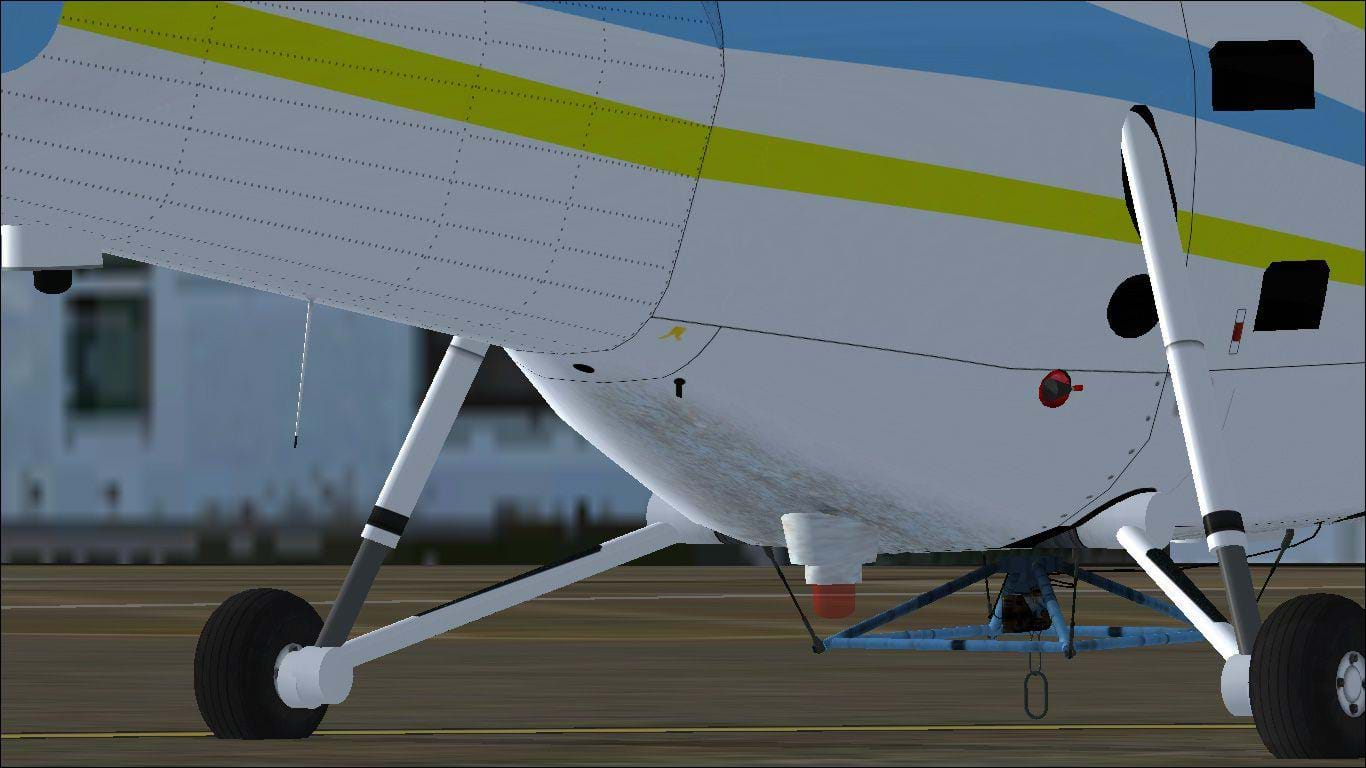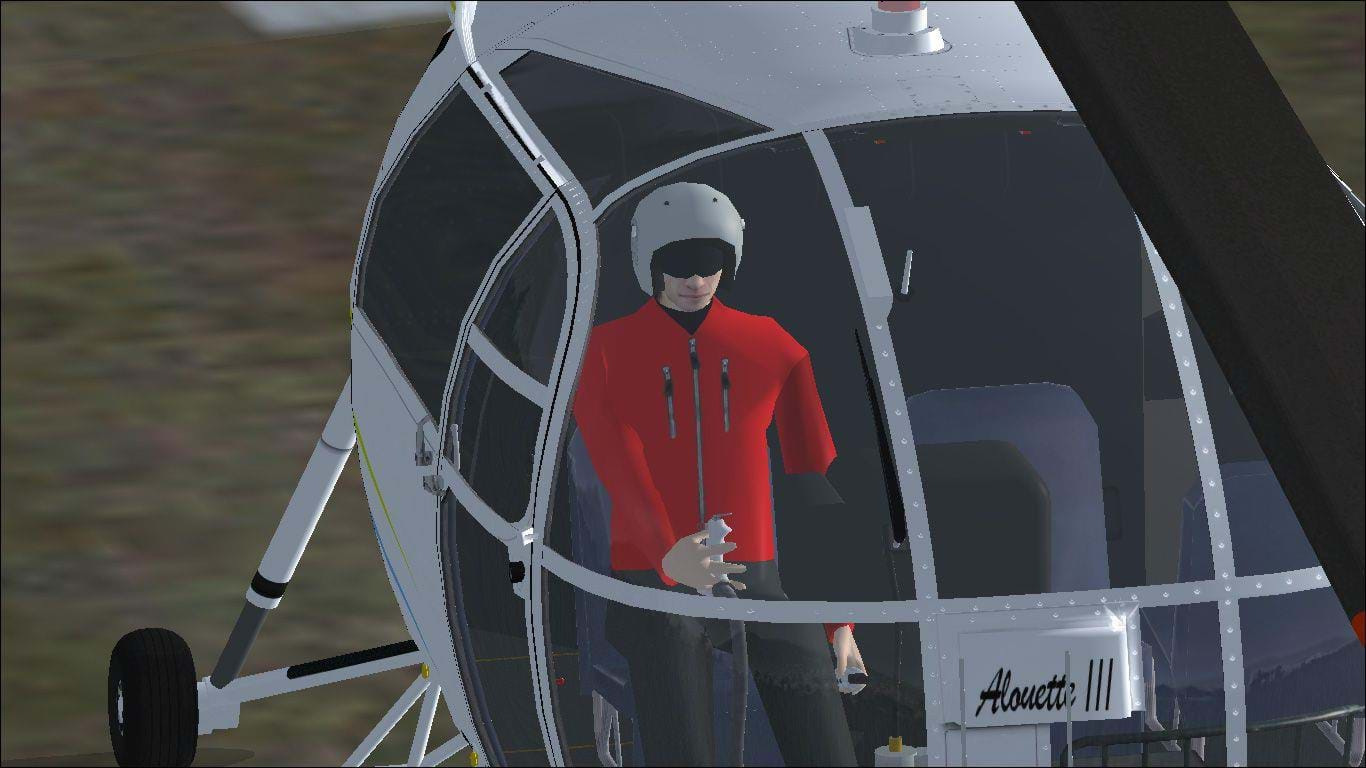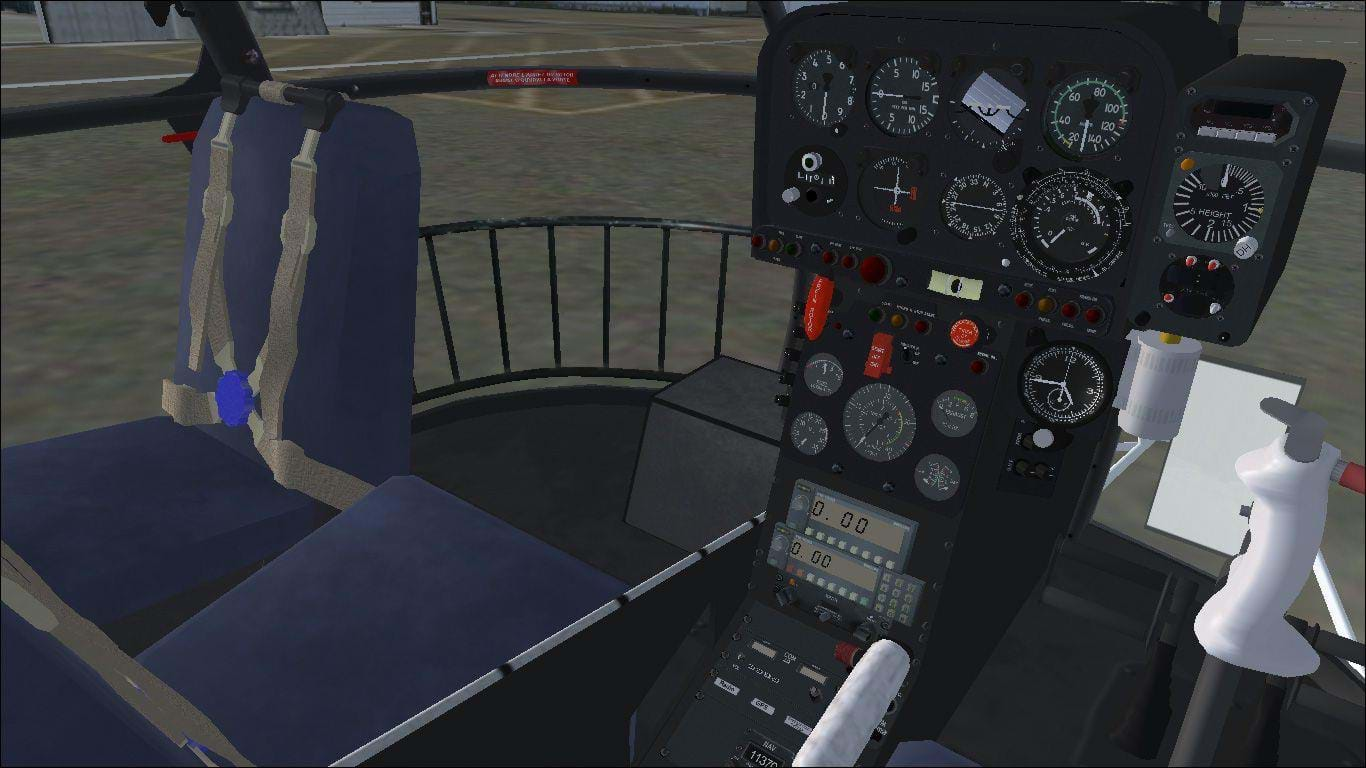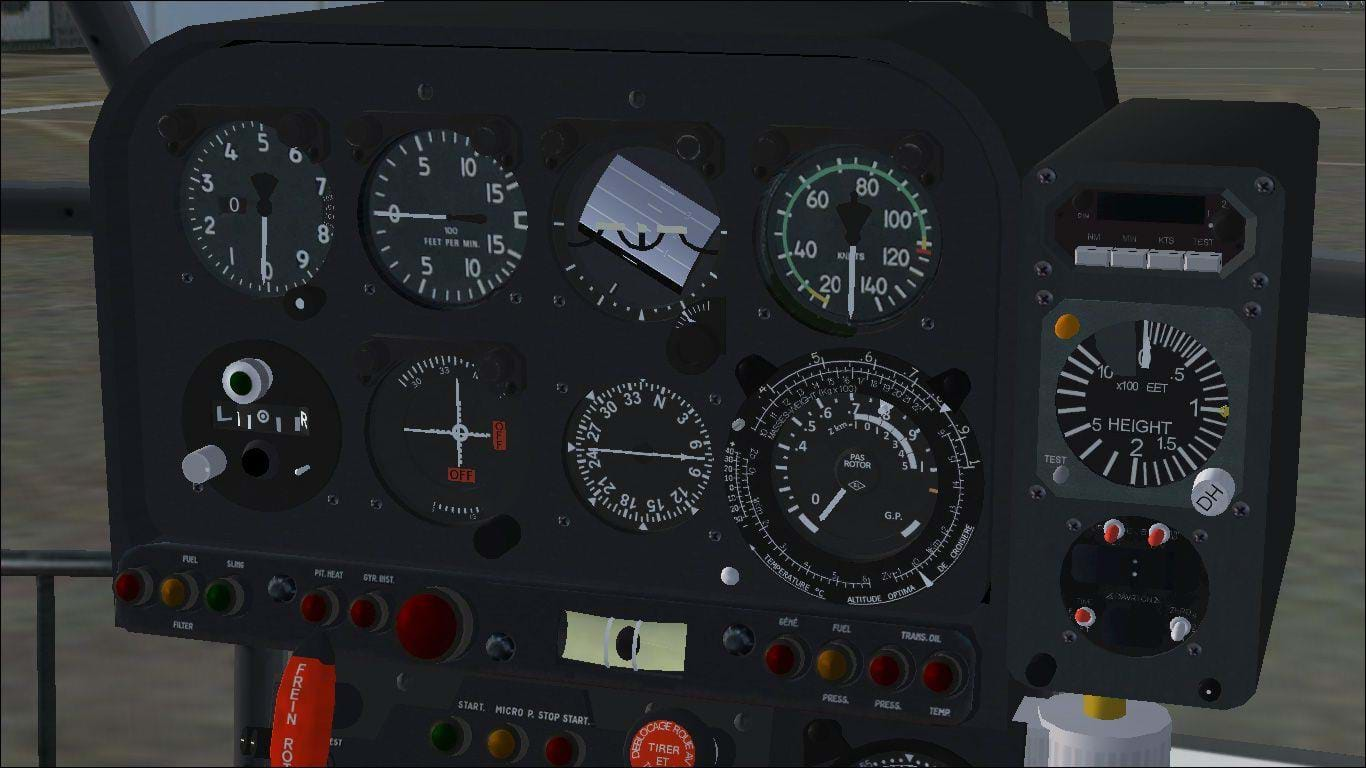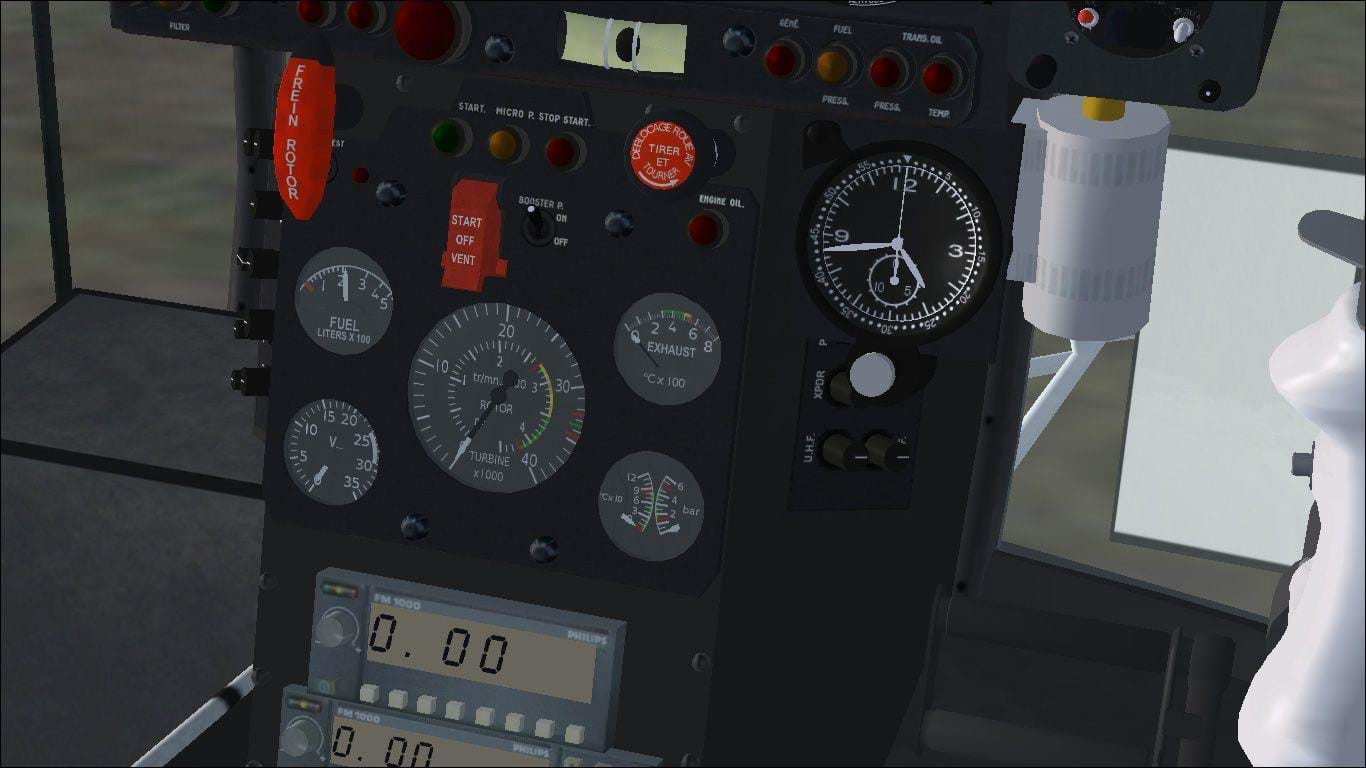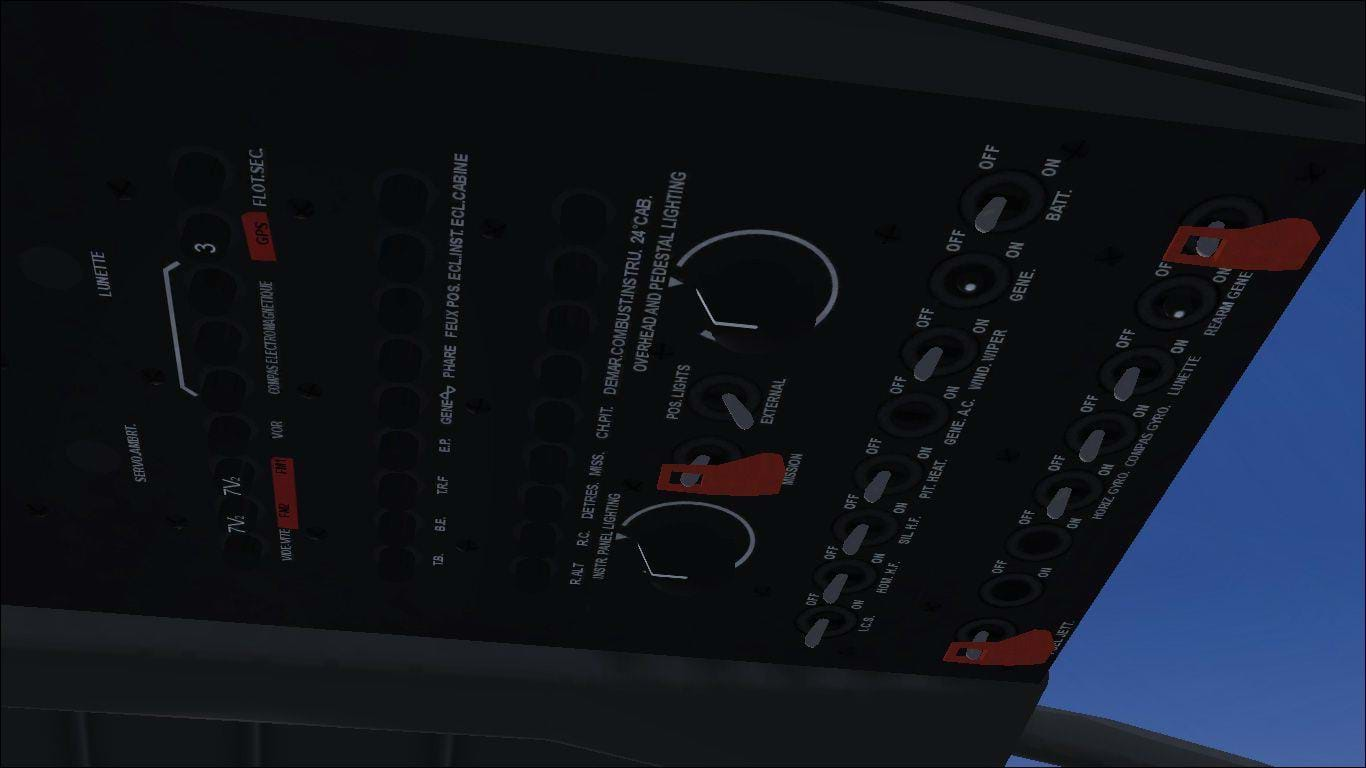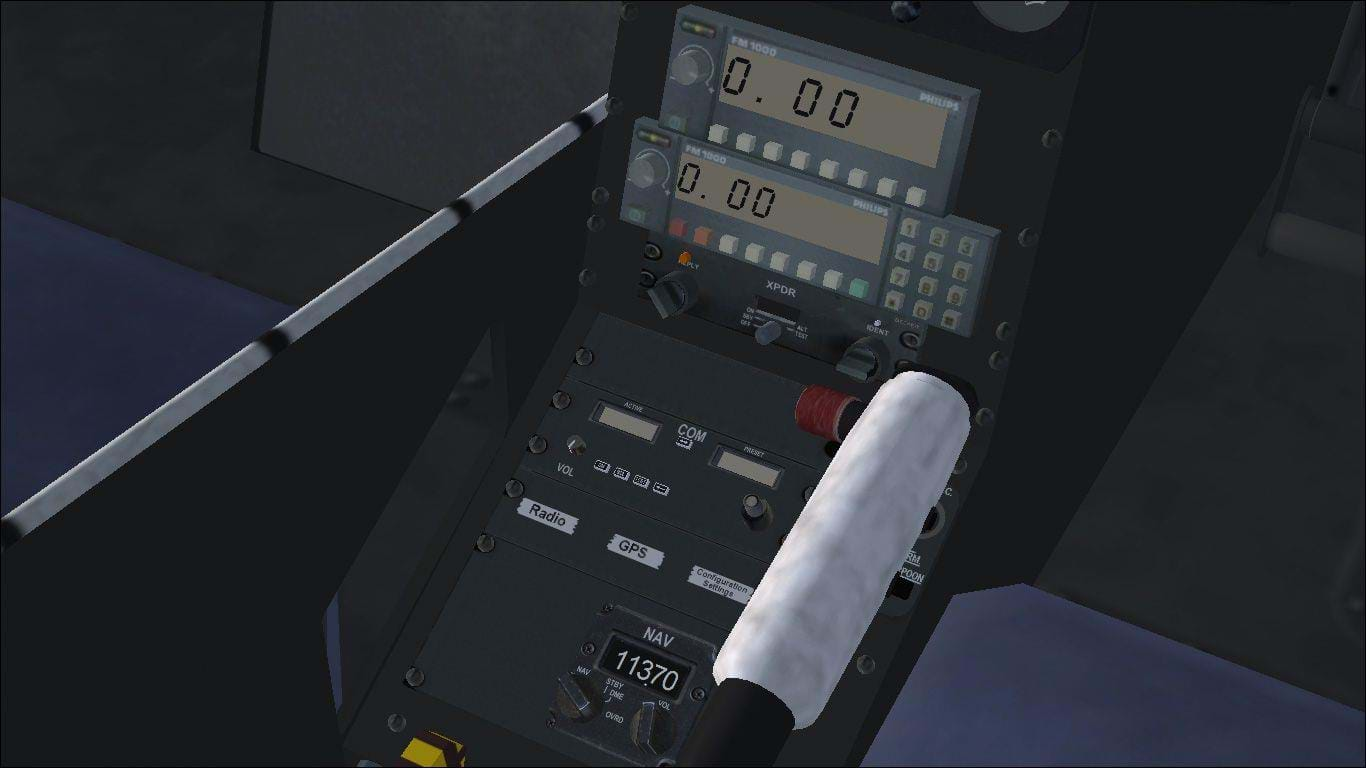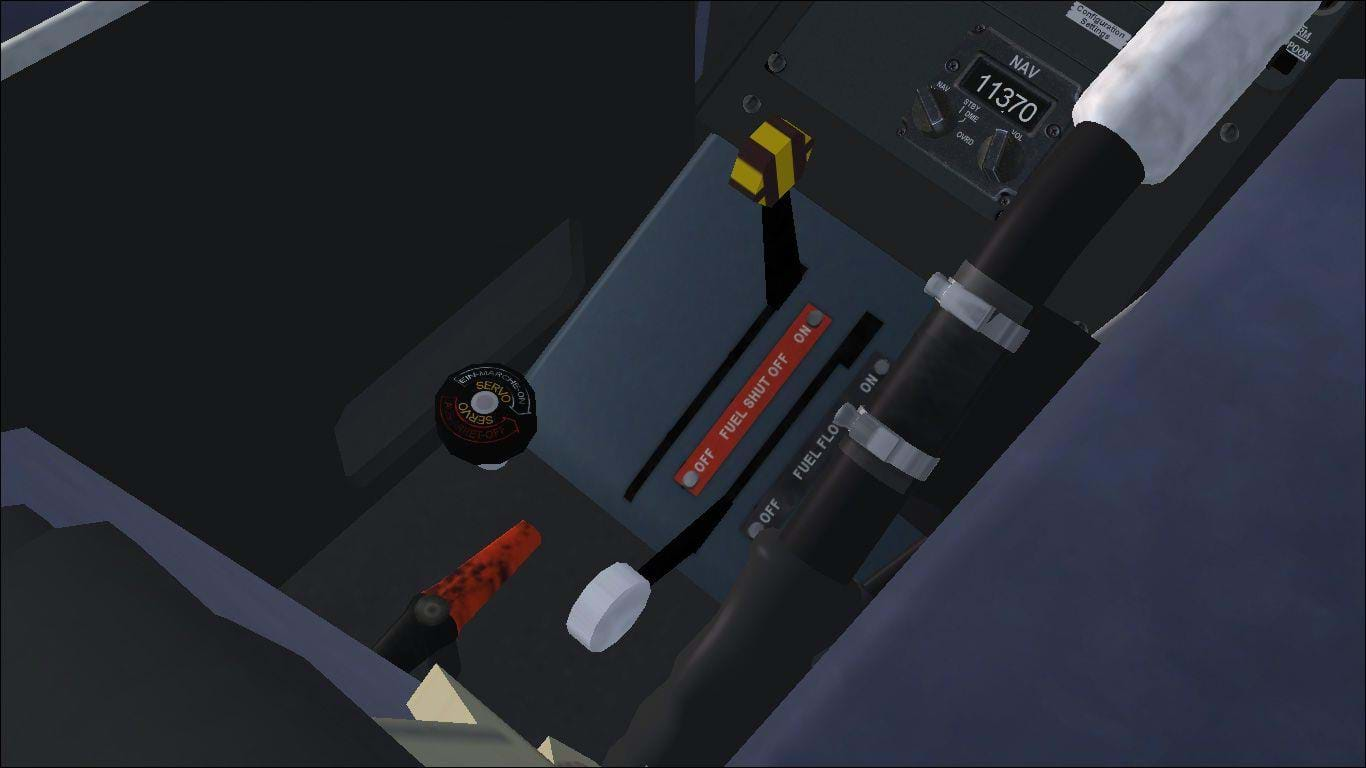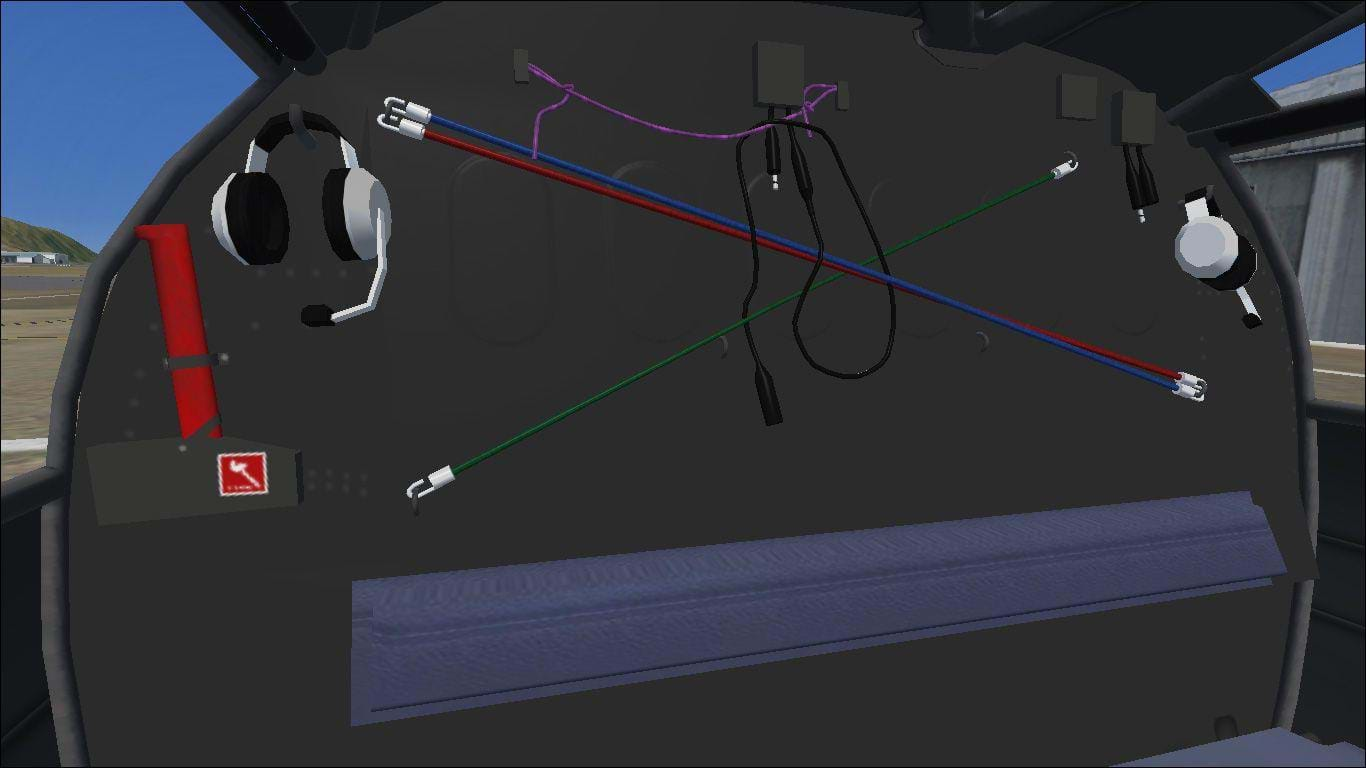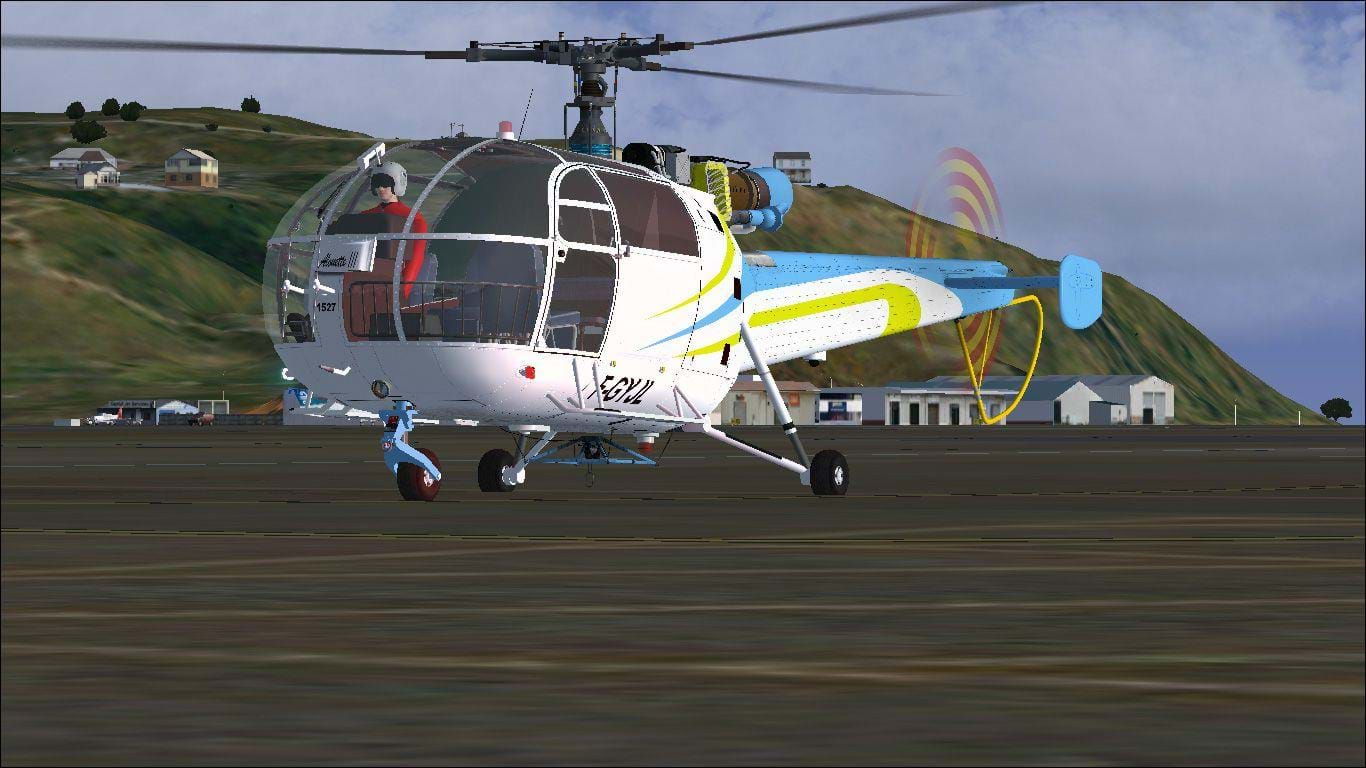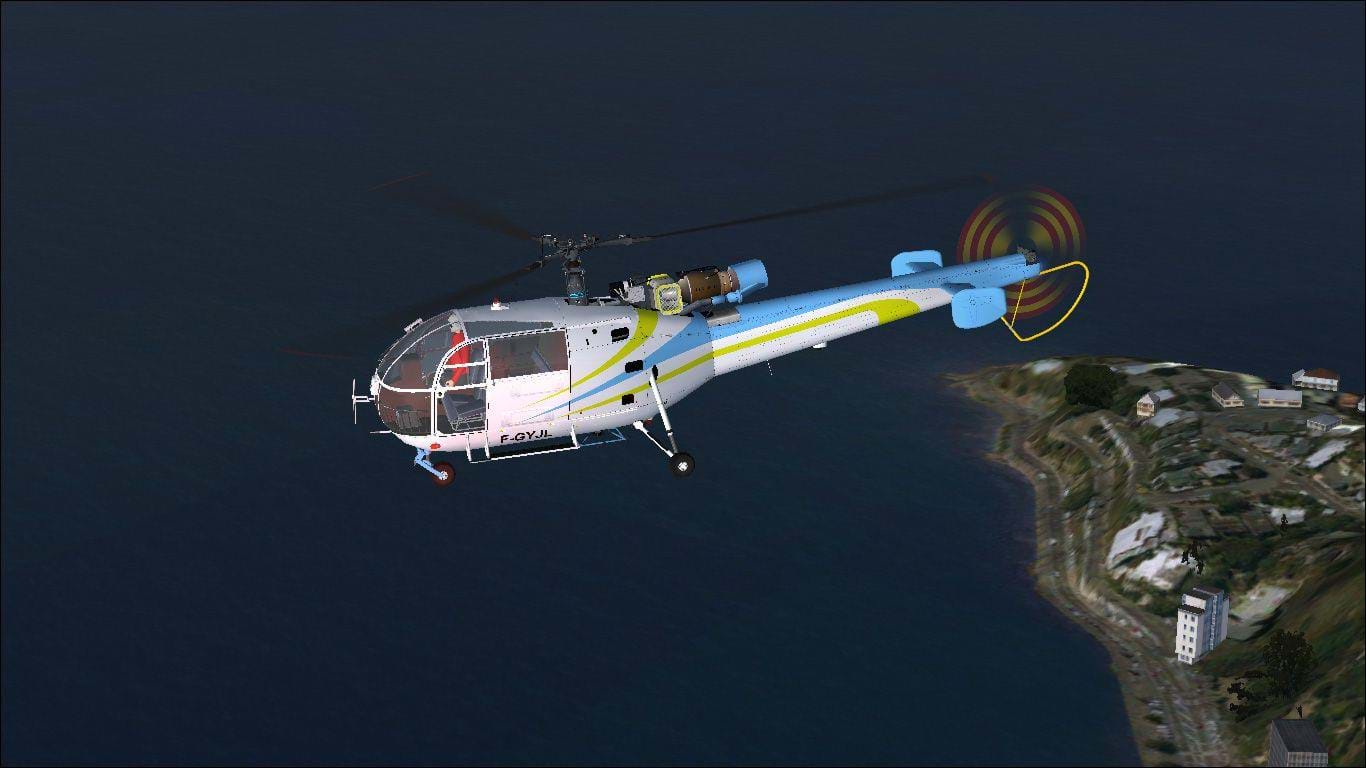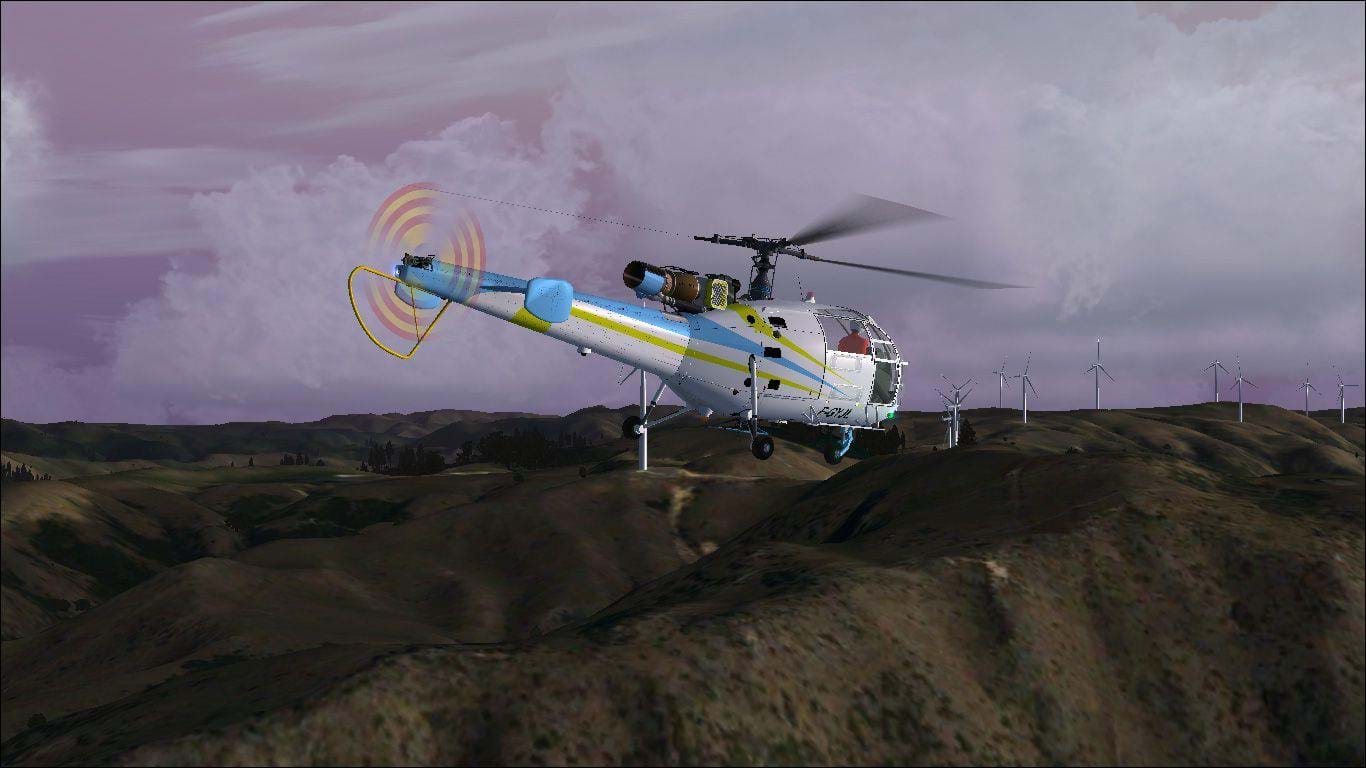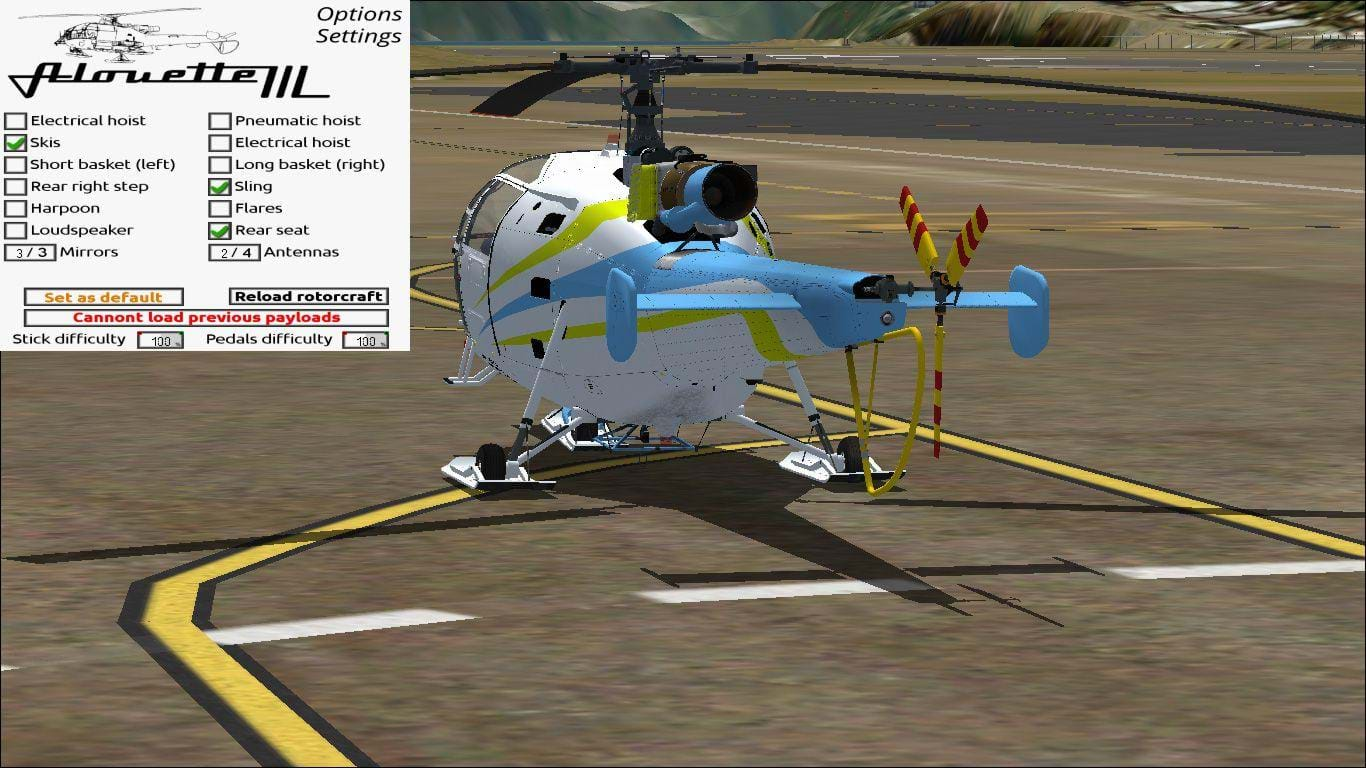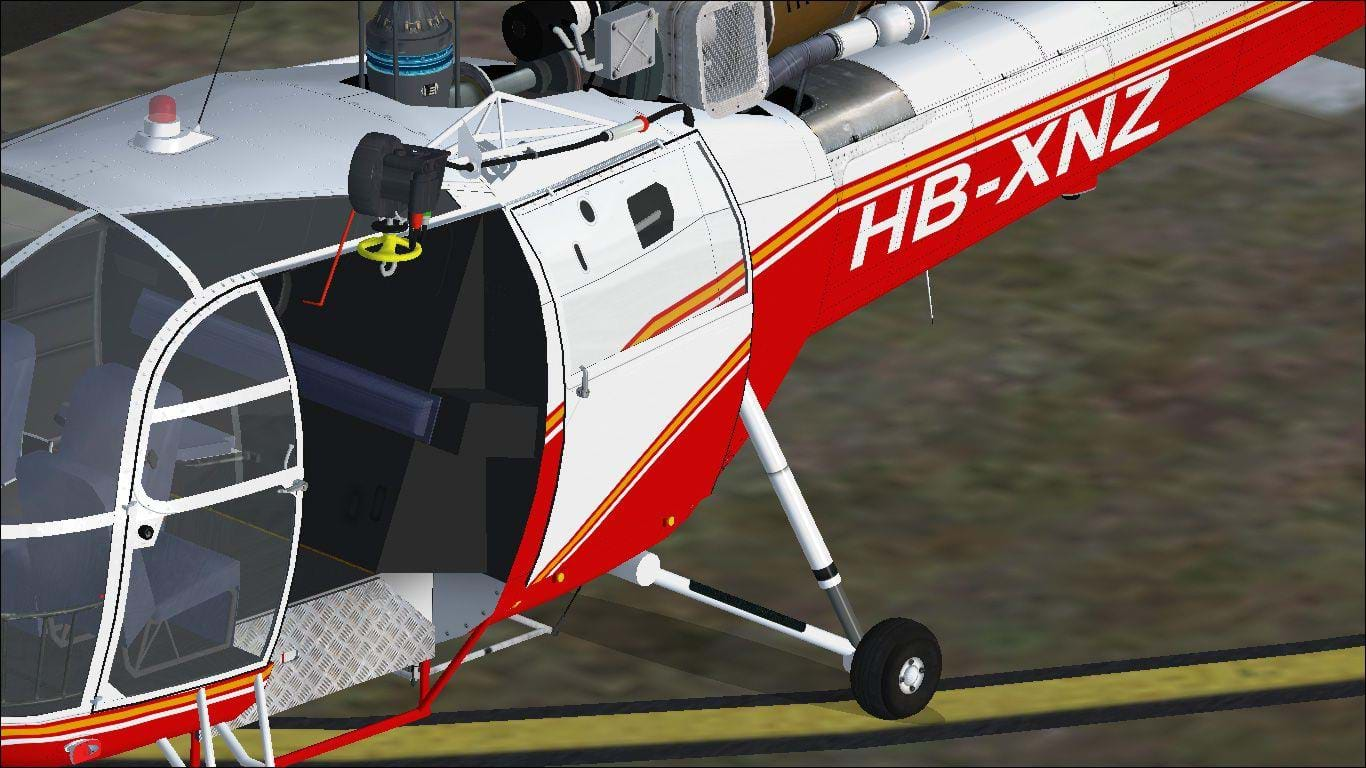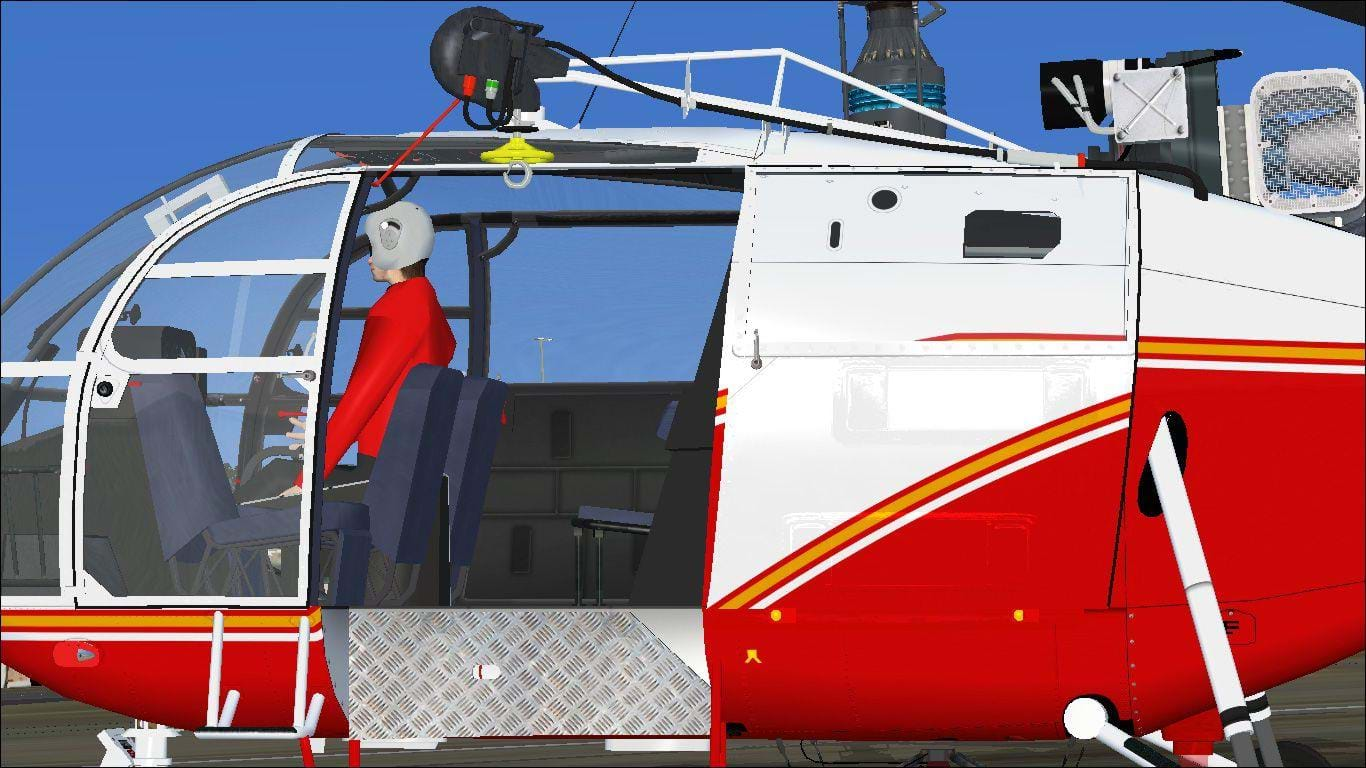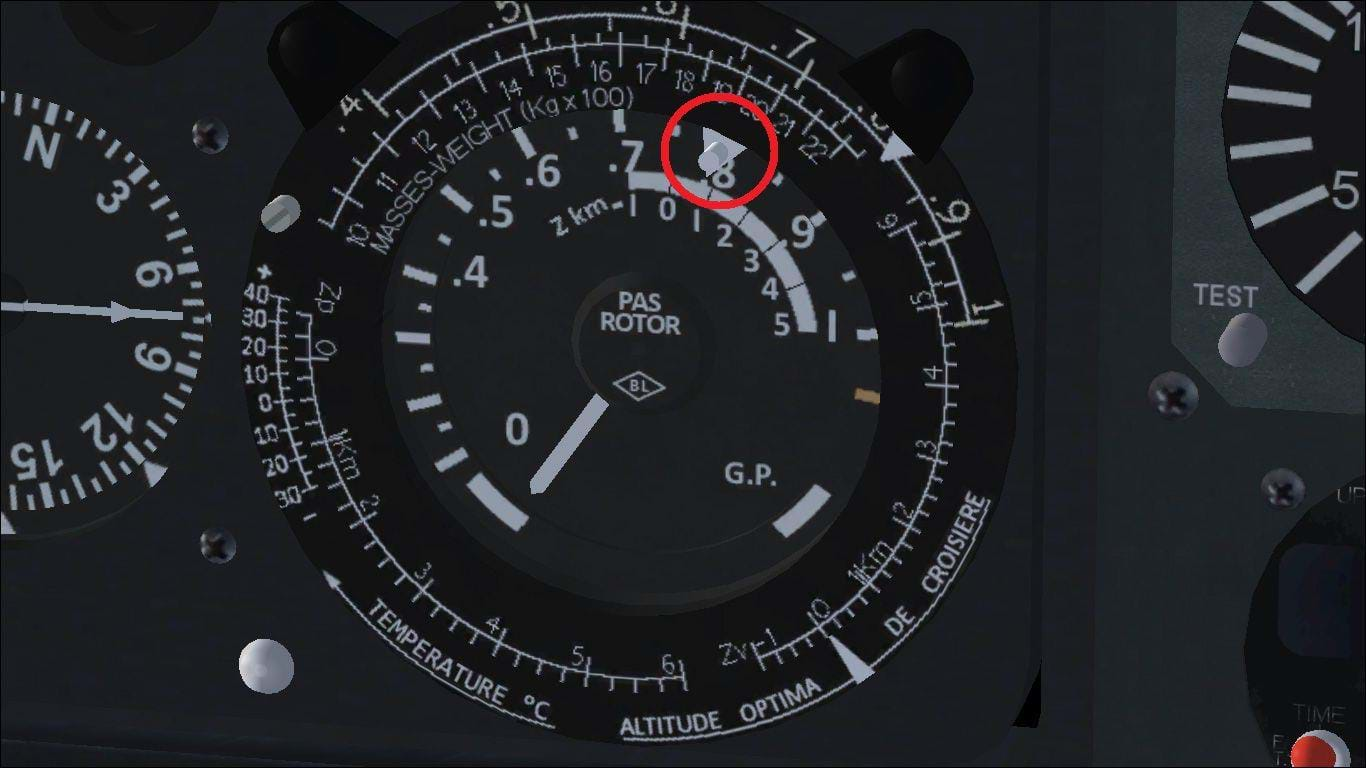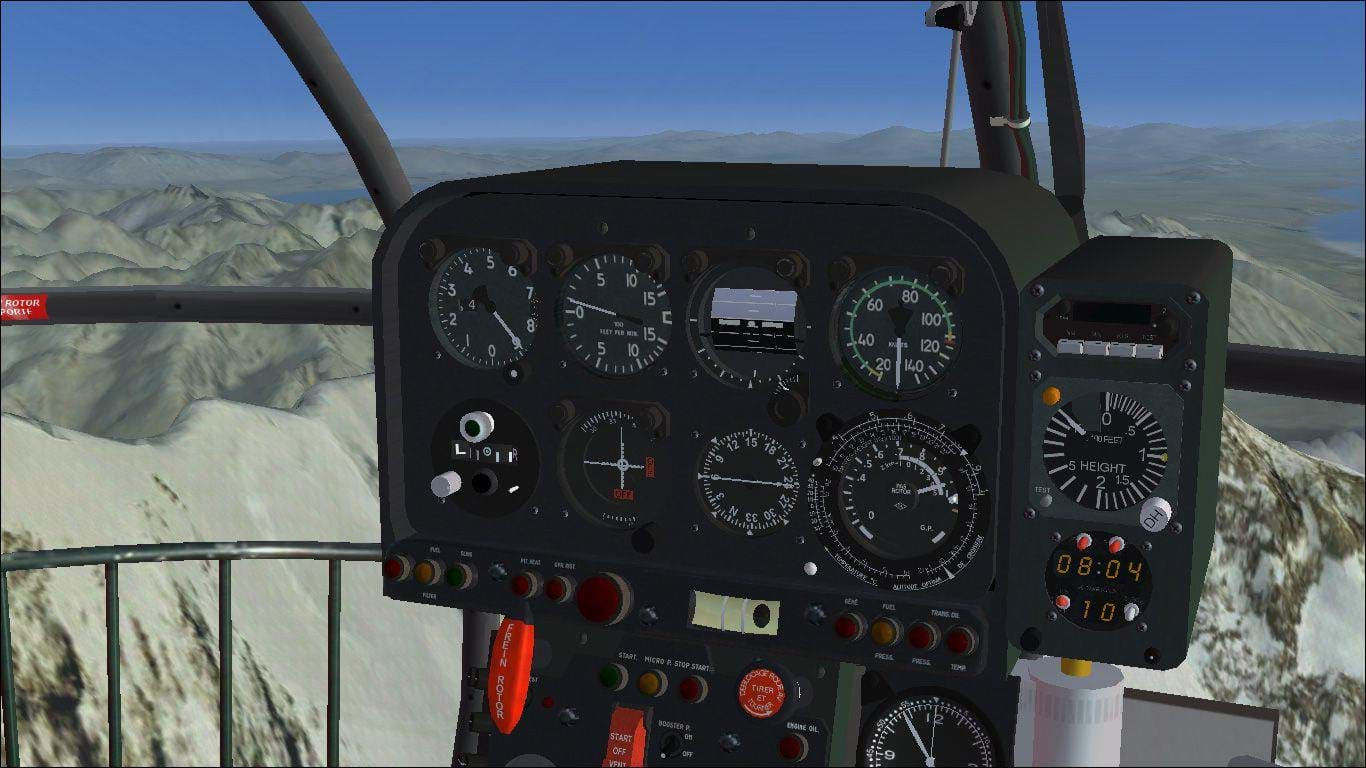Program History
The lineage of the Alouette series of helicopters can be traced back to WWII. The French company Sud-Est manufactured three examples of the German Focke Achgelis FA-223 in 1948. The struggle to make the aircraft stable soon gave way to the more conventional, if slightly odd looking single seat SE3101 which was designed by German engineer Henrich Focke. This aircraft did away with the two contra-rotating three bladed main rotor systems for a single three bladed head and two ‘tail rotors’ mounted at 45 degrees in a ‘V’ configuration. This development then lead to the SE3120 Alouette which ditched the twin tail rotors for a now more conventional single tail rotor and provided a three seat cabin. Although the new design broke helicopter speed and distance records, it was complex and difficult to maintain. The French government (who were funding the project) laid down an ultimatum to get a helicopter into production within two years, or all funding would cease. Out of a number of other designs, one officially labelled as the X-310G was chosen to be mated to the new 260hp Artouste turbine engine and the Alouette II was born.
Although technically unrelated to the original Alouette, the new aircraft used a similar space frame type tail boom and three bladed main rotor head with a pod type cabin. In March 1955, the SE3130 Alouette II conducted its first flight and three months later, was flown to a height of 26,926ft setting a new helicopter altitude record in the process. Production began in 1956 making it the first production helicopter to use a turbine engine. Alouette II production continued until 1975 by when it had been surpassed by the SA315 Lama
With the success of the Alouette II, Sud-Est looked at ways to improve the design and in February 1959, the more powerful SE3160 (designation changed later to SA316A) Alouette III flew. The new aircraft was powered by a 550shp (de-rated from 870shp) Artouste IIIB engine and differing from the Alouette II by having a bigger cabin, a fully enclosed tail boom, three bladed tail rotor and wheeled undercarriage as opposed to skids. In 1968, the SA316B improved on the design by uprating the M/R transmission and increasing the AUW to 4850lbs up 220lbs from the A model. This was followed by the SA316C which was powered by the 660shp (de-rated from 870shp) Artouste IIID engine and then the SA319 which utilised the 660shp (de-rated from 870shp) Astazou XIV engine.
Naturally, the French armed forces were amongst the first to take delivery with the Army, Navy, Air Force and the Sécurité Civile all operating the type. Other notable armed forces included the Argentine Navy, the Belgian and Netherlands Air Forces, the Spanish Air Force and Army and the South African Air Force.
The final aircraft rolled off the French production line in 1979 with 1657 airframes being manufactured by Sud-Est and an additional 738 being made by Sud-Aviation. The aircraft continues to be produced however in limited numbers by Chitak in India. Romania and Switzerland also built the aircraft under license although, in smaller numbers.
Today, the number of flying examples is decreasing with the AS350 and EC145 aircraft becoming more and more prevalent. However, they are still soldiering on with, amongst others, the French Navy, the Indian defence forces (see above) and the Portuguese Air Force along with numerous third world armed services. A browse of the production list shows that the numbers in civilian hands are reducing with many just being listed as “Withdrawn”. In a small way, the type still lives on with the SA315 Lama still being used in limited numbers within the civilian world.
Camille Bachmann’s SA-316 Alouette III
This model has been created by the team of Camille Bachmann, Benoît Dubé (RIP), Jean Michel Renaux, Raphaël Grinevald and Bernard Juniot and was released late last year. These talented designers and developers hang out on the Pilote-Virtuel forum. This is all in French as is the Royal French Navy for Flight Simulator site that hosts the file. The link to the download page is http://royalefrenchnavy.perso.sfr.fr/RFN-Avions.htm. The model focuses on the SA316B however given the similarities between the different variants; it could be used to simulate any model of Alouette III apart from the 319 due to the different engine. Given that the Alouette is disappearing from our skies, I have no real world experience in the type or the Lama. I do have time in the Squirrel which, it could be argued is a direct descendant of the Alouette. Therefore, my basis for this review will draw simply on my knowledge of aerodynamics and what I have picked up from people who have flown this or the Lama. It has been tested with FSX Acceleration and P3D, although, I’m not sure what version. The flight testing for this review has been conducted in Steam.
Download and Installation
The compressed file is 115mb with no fancy installer. Just placing the enclosed Effects, Gauges, Simobjects and Sounds folders in your main FSX directory installs the aircraft. This aircraft uses Doug Dawson’s dsd_fsx_xml_sound.gau file. If you have another add-on that uses this, it’ll ask you to overwrite. Uncompressed, the files come to 444MB. Pretty small compared to other add-ons. Within the Simobjects folder there are two different models, a winch model and one without a winch plus eight textures depicting, as far as I can ascertain, real world aircraft with an exception. One of their team was lost during development and so a fictitious livery is included to honour him. All of the liveries are from France or Switzerland.
Model and Textures
As I said before, this model depicts a ‘B’ model Alouette III. It could however be used to depict any model of the Alouette III except one. The SA319 version uses a visibly different engine and therefor technically would be incorrect but only to the trained eye. The model itself is very nice.
The rotor head is exquisitely modelled and moving the cyclic changes the pitch on the swashplates and blades. This is a feature not often seen in helicopter models. Note the changes in the pictures below.
The engine is nicely modelled and completed with what appears to be some photo real texturing on some components. Also, note the correct markings for the Artouste IIIB engine.
A very nicely detailed tail rotor and gearbox. The tail rotor blades appear to have a slightly thicker chord than they should and there is no evidence of the driveshaft or cables attached to the gear box but this is pretty minor.
Lots of little details are present like drain points, cargo hook hard points and the hook itself. The suspension moves with different weights and the tyres have flat spots. A little bit of weathering is present on the underside. It’s not too bad but not the best I’ve seen.
The above pic shows that although there are some really great little details like the labels and tow hook, the textures aren’t flawless. It isn’t a big deal but it’s not very pretty either.
The pilot is modeled and animated but I have to say that this is one of the weak points of the aircraft. No seat-belts, strange arm movements and he looks like he might need to come off the diet he’s on…. Of course, you don’t notice this unless you fly from the outside.
Moving inside, the model seems to be based on a pretty typical Alouette setup. Like a lot of older aircraft, there have been so many aftermarket and factory modifications, that only the basic panel layout remains.
The seating arrangement seems to be fairly typical of aircraft conducting rescue and winching operations. This arrangement can’t be modified unfortunately. All four doors open and unless you read the manual, you might have a hard time closing them again. The click spots are where the door handles are when the doors are closed. Took me a long time to work that one out…. There are a few jagged edges in the internal model but it’s not too bad. I’m cheating a little bit here. ‘Out of the box’ as it were, the gauges are in Metric, the default textures for the interior are all in French and that includes the cockpit tooltips. My high school French is pretty rusty so I’m using an aftermarket texture set that changes the gauges to Imperial and the language to English. (The cockpit textures here are of roughly the same quality as the originals so it’s still a fairly accurate representation) Unfortunately, the altimeter is encoded to be in Metric and can’t be changed.
The overhead panel is quite well represented. I’ll deal with the systems later on but I will say here that not all of the switches work. There is a guarded ‘Mission’ switch that activates the hook and winch.
The FM radios shown in the pic below are purely decorative. Just visible under the collective is a rotating switch to select the hook, harpoon, winch etc. The transponder and radios are visible in the virtual cockpit but is also able to be pulled up via the standard 2D panels. It would have been nice to have customized 2D panels but you can’t have everything.
Right down in between the seats, the fuel controls and park brake.
Looking back over your shoulder, the rear cabin has some quite nice little features like the headset jacks and cargo restraints. The rear bulkhead could do with some more definition and there are a few jagged edges on the headsets that are hanging up.
When the blades are turning, the animations are fantastic. The tail rotor looks like it’s moving fast and the main blades look like they are ‘coning’. In flight, it looks really convincing.
A feature present on this model that I really like is its load manager. When you install some add-ons, you end up with a huge number of variations for each different colour scheme. It really annoys me to the point that I edit the aircraft.cfg to lessen the number. On the Alouette, you are presented with the different colour schemes and apart from the winch, you can customise each scheme to your liking. If you want to put the cargo hook on, just bring up the little 2d panel and select the cargo hook. The hook will appear on the model AND it’ll change the weight of the aircraft. Want to put skis on? No problem, just do it. You can also save the settings for each different paint job. The only thing that can’t be added is the winch. That can only be added to one of the models but other than that, you can put whatever you want onto the aircraft. It’s such a great system.
In the above picture, I have added the skis. Note; there are two hoists listed. The electric one sits on the side and can be used by either model, the pneumatic one can only be used on one.
The winch model is identical except for the trap door in the floor. The winch can be added and removed as above.
Overall, the developers have done their homework with this one. The only things I could find wrong are the lack of drive system to the tail rotor and the blade chord being too big. The lack of drive system isn’t really an error since it doesn’t affect the quality of the model. The exterior textures aren’t too bad, just a few little glitches. The interior could simply do with a little more definition. The best representation of the Alouette III I’ve seen.
Systems
The Alouette is an older aircraft and while it isn’t very complex, the systems are different from more recent helicopters. In my experience, this is the first area that gets neglected by developers. Due to the nature of FSX, some features become difficult to code. On the overhead panel in the cockpit of the Alouette, none of the circuit breakers function. This isn’t uncommon in an add-on though and according to the Rotorcraft Flight Manual (RFM) depending on the model and equipment installed, whole areas of the upper panel may be blanked off. It would have been nice to at least have the circuit breakers animated if not functioning. The important switches or lighting and the electrical system do what they’re supposed to. The ‘mission’ switch here might seem like artistic license but in actual fact, the real aircraft has this to provide power to the winch etc. It’s a nice little touch. The switches that don’t function, deal mainly with radios and optional equipment that isn’t installed.
With the electrical power on, certain warning lights on the main panel light up. The warning lights are all push to test types and the Over torque light is accompanied by a horn. One of the unique features of the Alouette is the ‘computer’. The limiting factor in how much collective you can pull is worked out on the computer prior to flight. I won’t go into this too much here but it is detailed in the manual. If you don’t want to do these sorts of things in the sim, a mouse click on one of the outer rings of the computer will set the pointer to the maximum pitch. It is to be noted that pulling more than maximum pitch will set off the over pitch horn and light but no damage or failures will occur. The pic below shows the max pitch pointer circled in red. Pulling over this will trigger the over-pitch warning.
On the right hand side of the panel is a little stack that contains DME, radar altimeter and a digital clock. All of these function much as they should although the clock requires you to ‘grab’ the switches with the mouse pointer to move them.
Since the Alouette is on wheels, it can be taxied. The aircraft seems to have, though not actually stated in the RFM, a castering type nose wheel which is used to steer. There is a locking knob on the panel that locks the nose wheel in the centre. Certainly in terms of animation it works as it should. However, due to the limitations in FS, it doesn’t actually prevent the aircraft from being turned on the ground.
One of the interesting features of the Alouette is the Artouste IIIB free turbine. A free turbine basically means that the engine can be run up to without the rotors being spun. It achieves this by use of a centrifugal clutch that only engages when a certain RPM is reached. This system allows the engine to be started while passengers and or cargo is being loaded with minimal danger to persons walking around the aircraft…. apart from their hearing. The procedure for starting this type of engine is different but once the principle is understood, it’s very intuitive.
On the Alouette, there is a three position switch with ‘Off’ in the middle, ‘Start’ at the top and ‘Vent’ at the bottom. There is also the throttle which is a lever in between the seats. Once the aircraft is ready for starting and with the boost pump on for 20 seconds, the switch is moved from ‘Off’ to ‘Start’. The engine should wind up and light off without any intervention from the pilot. The only thing to watch is the T4 (That’s Outlet Temperature for those used to American types). The engine should continue to accelerate to between 16000 RPM and 19000 RPM. Once the pilot is ready to engage the rotor system, the throttle is progressively moved forward to increase RPM. Depending on the type and condition of the clutch, the rotors should start turning between 19500 RPM and 27000 RPM. The pilot progressively increases the throttle to give an increase of approximately 5 to 10 RPM per second in the rotor until the throttle is all the way open and in the ‘flight gate’. The aircraft is now ready to fly.
On our FS version, the first issue, and it isn’t a big one, is that the boost pump is the wrong way around. The ‘on’ position is with the switch down whereas on the real thing, the switch is up. Not a big thing at all. The fuel pressure warning light goes out as it should when the boost pump is on. Flicking the three position switch to ‘start’ activates the starter and the starter and micro-switch lights illuminate as they should. If everything goes according to plan, the engine will light off and settle at around the 19500 RPM mark so according to the RFM, it’s idling a little bit high. The other thing that I have noticed is that the T4 doesn’t get high at all on the start. Watching some videos of the real thing, it looks like it gets up around the 400 to 450 C mark. On our version, it barely scratches 200 so I don’t think we need to worry about hot starting. Due to what I suspect are coding issues, the rotor engagement is automatic. Clicking on the throttle lever starts it moving forward at such a rate that the rotors engage gradually. It would have been nice to be able to manage this yourself but as I say, I think the coding required allowing people to mismanage the engagement would have been quite intense so I can forgive the developer for doing this. The rate at which the blades start to turn is accurate and actually has a really great feel to it. The only thing missing is the slight bounce that the real aircraft gets when the rotor RPM is low. Top marks to the guys for this.
When it’s time to shut down, the procedure on the real aircraft starts with moving the throttle back to the idle position. If the engine is to be shut down, then the three position switch is set to ‘off’ and the rotor brake can be applied once the rotor RPM falls below 175. As the engine RPM falls, the clutch disengages and the rotor becomes free so if the engine is to be kept running then the switch remains in the ‘start’ position. Wait for the RPM to reach 175 and then pull the rotor brake. To go flying again, just start moving the throttle forward as above.
In the sim, the retarding of the throttle is also automatic and it has been acknowledged by the developer that it is too slow. Not the lever movement so much but the rate at which the RPM falls. Also mismanaging the rotor brake can lead to some strange results with engine RPM being dragged down but the engine not flaming out. The easy way of getting around this? Don’t mismanage the system.
The third position on the starter is the ‘vent’ position. This allows the engine to be spun without fuel or sparks for the purposes of cooling. If the engine hasn’t been shut down for long, then flicking the switch to ‘vent’ will lower the temperature enough to allow a restart. On the sim, it seems to work as advertised. There are issues with the sounds but I’ll deal with that in the next section.
Next to the throttle, there is a fuel shutoff lever that does exactly what it’s supposed to. I have had issues however in flight trying to shut the engine down for autorotative training. This sort of crosses over to the flight dynamics section but I’ll cover it here. I can’t seem to make the engine flame out in flight. Even using the fuel shutoff, the RPM just falls gradually as if you were slowly retarding the throttle making autos impossible. Even programming in engine failures produces the same results. It’s a bit baffling considering that the autorotation procedure is outlined in the manual. I might have a go at contacting the developer about this. I suspect that it might be a Steam issue as this aircraft was developed for the ‘legacy’ version.
The Alouette’s controls are hydraulically boosted and there is a shutoff valve on the centre console. The shutoff valve isn’t animated and there is no modelling of the hydraulic system per se but even in the RFM, the one paragraph accompanying the diagram is rather brief. It simply says that the controls are boosted and if it fails, the aircraft can still be flown by cutting out the servos via the valve. With all that in mind, I can’t really take marks off for not modelling the system. There isn’t even a hydraulic check as part of the run up in the RFM.
There is also a park brake modelled. Nothing much to say except that the handle is where it should be and it works.
Overall, for a helicopter that has some slightly odd systems, the guys have really done quite well on this. The small issues of circuit breakers and non-essential switches not being animated is a small issue. Failure modelling for mismanaging the engine would have been really nice, as would the ability to conduct Autos. I’m still not sure if it is just an issue with Steam, with me or with the actual model that is causing this. I’m leaning more towards it being Steam or me considering it is explained in the PDF manual so I can’t really take too many points off for that. The start and shutdown are very nicely coded and modeled. Apart from some slightly incorrect RPM and temp values, this is one of the best system models I have seen.
Sounds
Anyone who has seen a Lama or Alouette fly will tell you that the sound is one of the most recognizable in rotary aviation. For once, the noisiest thing on the machine isn’t the tail rotor, it’s the engine. It all has to do with the type of compressor. The Artouste engines use a centrifugal compressor and it is noisy. An add-on for this type of aircraft has to get the sound right.
Inside, all of the switches and switch covers have sounds as do the push to test warning lights. The doors, both sliding and outward opening have sounds attached however they are the same sounds that only really cover the sound of the latch and not, in the case of the sliding door, the sound of the door running on the rails. It’s a pretty minor point though. Unfortunately, the park brake, rotor brake and nose wheel lock handles don’t have any sounds. Not an issue when the engine is running but in a quiet cockpit, it would have been nice to hear these things. The battery switch as I said has sound but there are no sounds for when the battery is running. This isn’t necessarily incorrect as when viewing videos of the real aircraft, there seems to be a lack of any sound at all from the electrical / gyro system.
The fuel pump makes a slight noise when switched on and the noise seems quite accurate. Hitting the start switch though is where the sound comes into its own. The starter and compressor noise give way to a scream when fuel is injected. The sound continues to build until idle RPM is reached. There is a slight and I do mean slight gap in between the start and the idle sounds. When the throttle lever is advanced the compressor scream build as does the noise of the blades travelling through the air. The sound change is very smooth and progressive. Terrific!
One of the things that really give the aircraft some atmosphere is the subtle yet noticeable ‘blade slap’ that you get in turns and in shallow descents. I personally thought it would have been louder as in other aircraft but the simple fact that it is there and has been coded to play at the appropriate time is something not often seen in payware add-ons let alone freeware.
There are only two things that I can fault in the sound pack. The first is the noise when shutting down the engine. The sound file has obviously come from an aircraft shutting down from above idle speed i.e. not stopping the blades first. If you stop the blades and shut the engine down separately, there is a distinct difference in the noise between the files. If you shut down without fully disengaging the rotors though, the sound difference is less noticeable. The second is the sound when using the ‘vent’ function on the starter switch. As I said before, venting the engine spins the compressor up without adding fuel or a spark. Therefor it should sound the same as the engine starting. However, the actual sound of the compressor winding up is missing when venting the engine.
Overall, it would have been nice to have a few more cockpit ambiance sounds for some of the levers and better sounds for the doors. The missing sounds for the compressor when venting the engine is a slight oversight. The sound of the aircraft running and the blade slap more than make up for it though. Two different shutdown sound files would have been nice but it isn’t a showstopper. It’s a very good sound pack overall.
Flight Dynamics
The manual has a section on how to set up you controller but more on that later. Pilots of the Alouette love it for its simplicity, space, comfort and flying characteristics. It has been said that it is smooth, stable and just simply easy to fly with it having plenty of power in reserve, even up high. Although I have never flown an Alouette nor am I likely to now, I can say that if the developers have been true to the real aircraft, I have missed out. Picking up into the hover at sea level uses very little power and you have to watch that you don’t rocket into the air. Put some weight in it and it becomes more like any other helicopter. Take it to altitude with some weight and it’s just like anything else. The pic below shows the Alouette hovering above Mt Cook, the highest peak in NZ at 12218ft (3724m). This was with a full load of people and about 50% fuel at the start but it was down to about 30% by the time I got there. I had power to hover and climb, but not much.
You don’t seem to need any right pedal in the hover. I find this curious. I can’t imagine that the aircrafts tail rotor is so efficient that it’ll pick up without any anti torque in. Having said that, it is possible to rig aircraft so that they don’t require a lot of anti torque on take-off. This is useful when the aircraft is doing a lot of external load work.
While the aircraft is pretty stable in flight, it does tend to porpoise about a bit in pitch and yaw. This is obviously down largely to the pilot but my experience is that helicopters are more likely to be unstable in roll rather than pitch. Proper helicopter flight controls might fix this. On the 2d configuration panel mentioned before, there is an option to dull the ‘realism’ of the flight controls. I have found that having the stick at ’80’ and the pedals at ‘50’ makes it a lot more stable for me. Ultimately though, this will depend on the user and their control setup.
Coming into land, the aircraft has a tendency to float, particularly when light. I am unable to comment on the realism of this. I just know that you really have to watch it if you’re trying to slow down in a hurry.
That’s about all I can say on the flying characteristics. I would be interested to hear from any Alouette pilots who have used this add on.
Overall, the aircraft provides a relatively stable platform for sling and mountain work and in just flying around, it’s not too bad. I’m not sure about the lack of anti torque pedal on take-off; or the pitch and yaw sensitivity. Based on what I know about helicopter flight dynamics in general, I would have to say that this is overdone.
Miscelaneous
Documentation
The manual provided for the aircraft is a 17 page PDF file. There is another PDF file detailing installation of the English version of the configuration panel. The documents, although translated from French are clear and concise with good explanations of the aircraft systems, particularly the computer and normal operating procedures. There is a section detailing controller set up which both in the sim itself and in the 2d config panel. The manual also details all of the add-ons available in the configuration panel. A well written document.
Price
The best price possible: FREE!
Where to get it
You can get it here.

